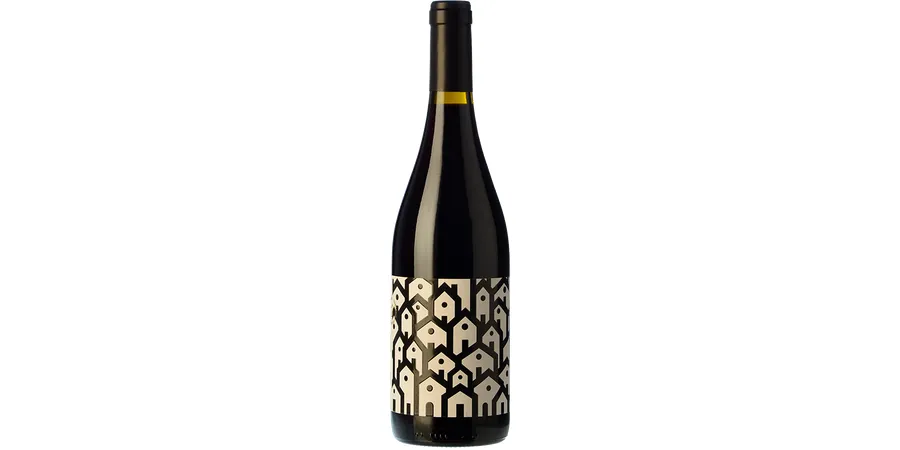June 2025 Red & White
Reds
Bodegas Venta La Vega Adaras Aldea, Castile La Mancha, 2022
In the foothills of the legendary mountains of Almansa, known as El Mugrón, are the largest single planting of the Garnacha Tintorera vines in Europe. This privileged location has abundant water and excellent soil, with a microclimate that guarantees conditions suitable to the organic production of the singular wines of Bodegas Venta la Vega Territorio Ecológico. The estate includes more than 850 hectares of organic farm land in the mountainous limestone soils of Almansa. Altitudes of 1200 meters encourage the creation of distinct, natural micro-climates that enable the land to be farmed without the use of any chemical treatments or additives.
This is a personal project of the renowned oenologist from the Bierzo region, Raúl Pérez. José Ángel Martínez, who made his winemaking fame, much like Laura Ramos, on the Envinate project, works closely with Raúl managing the daily operations. Venta La Vega’s greatest expression is found in “Ternario,” a limited collection of three progressively more evolved organic wines that are all based on the essence of the native variety, Garnacha Tintorera (51%), Garnacha Tinta (28%), and Syrah (21%).
Cherry red color with hints of violet and high to mid-depth color. On the nose, aromas of minerality and red fruits. In the mouth, it’s an expressive and clean wine with a good balance of fruitiness and flavors typical of limestone. Well-structured tannins with fresh, bright acidity.
Best paired with roasted & grilled meats, hearty stews, and aged cheeses for the wine’s robust flavors. Specifically, dishes with tomato-based sauces or those featuring chorizo or other Spanish sausages are excellent pairings.
Fattoria la Lecciaia Cabernet Sauvignon, Montalcino, 2017
Purchased by Mr. Mauro Pacini in 1983 and upgraded with the most advanced winemaking installations, Fattoria la Lecciaia is a wine estate that combines a young, dynamic approach to the wine business, while strictly adhering to the antique traditions of Brunello di Montalcino. Located in “località Vallafrico” and surrounded by the vineyards of some of the most iconic estates of the area, the estate is in the center of the original micro-terroir where the world-famous Brunello di Montalcino was first produced.
The wines have excellent character and flavor thanks to the particular vineyard situation, soil structure, and excellent climate. This wine is made from Cabernet Sauvignon grapes sourced from estate vineyards in Montecucco (Grosetto Province). The soils are light and well-draining, and the planting density is medium using traditional Cordon trellising. The grapes were hand-harvested in late September, early October, when they reached peak ripeness and maturity. Vinification was in temperature-controlled, stainless-steel tanks, then aged for 18 months in a mix of Slavonian oak casks and barrique.
This Cabernet Sauvignon is ruby garnet red in colour, with a slight purple rim. Classic, earthy aromas of wild berries, cherry, and blackcurrant , with notes of dried herbs, baking spices, and liquorice. Medium- to full-bodied, and rich on the palate. Firm tannins and a long finish. It may need a few minutes to open up, so let it breathe!
Pairs best with tomato-based sauces, aged cheeses, and grilled or roasted meats. The wine’s boldness complements the flavors of dishes like lasagna, Bolognese, and eggplant parmesan, while its tannins stand up to the richness of grilled steaks or lamb.
Product Reviews:
James Suckling, 90 Points
“Dried red plums, redcurrants, paprika, red peppers and red licorice. Medium body, fresh acidity, firm tannins and a fine finish.”
Whites
Kate Arnold North Coast Sauvignon Blanc, Alexander Valley, 2024
For six generations and more than 150 years, the Mauritson family has held a reputation for outstanding winemaking, along with sought after harvests. The combination of low humidity, soil drainage, and moderate temperatures makes for an excellent Sauvignon Blanc.
The 2023 vintage was celebrated as, “the vintage of a lifetime,” due to its exceptional quality, boasting the longest growing season in over a decade. The consistently mild weather, above-average crop yields, and extended hang time contributed to an unparalleled freshness,
purity, and flavor.
Abundant winter and spring rains replenished Clear Lake and saturated the soil. These were ideal conditions for the bud break that commenced in March. During bloom and fruit set, the mildly warm summer weather, with temperatures averaging 72-75°F facilitated healthy canopy growth. Fruit clusters maintained loose, promoting optimal air circulation. This coupled with the cool weather and ample sunshine contributed to a gradual ripening of the grape skins. After this extended hang period, which enhanced the development of the flavors, harvest began around Labor Day weekend. This vintage has a higher acidity than warmer years and is praised for its elegant flavors.
This wine shows a light golden straw color with aromas of lime and green apple with a hint of
orange blossom. On the palate, bold citrus with herbaceous notes and bright acidity with a fruit-forward nature and a clean finish. A perfect pairing with pan-seared scallops with citrus beurre blanc and lemon parmesan asparagus risotto.
Product Reviews:
Wine Enthusiast, 93 Points
The Tasting Panel, 91 Points
Bodegas Protos Ribera del Duero Aire de Rose, Castilla y Leon, 2024
Protos comes from the Greek word for “first”, signifying how the Bodegas Protos winery was the first winery in Penafiel, Spain, founding the winemaking of the Ribera del Duero region. The project started with the union of some of the best Spanish winemakers at the time and through their grand efforts and perseverance for each wine vintage, it also became one of the best wineries in Spain.
This rose is a complex blend of Tempranillo (50%), Garnacha Tinta (30%), Albillo (10%), Verdejo & Viura (10%), and has a bright and clean appearance with a very pretty pale pink color, reminiscent of amaranth, with even light fuchsia hues. On the nose, medium intensity with notable complexity. Delicate and evocative, the aromas of white stone fruit, such as peach, stand out, with hints of citrus and red berries. Fresh and silky on the palate, its elegant acidity is balanced by a complex fruity note and a certain smoothness due to aging on the lees.
Perfect to combine with light meals such as salads and gazpacho, Asian dishes (sushi, dim sum, Vietnamese rolls), Arabic meals (couscous, mezze hummus), also excellent with tuna, anchovies, prawns, risotto and pasta.








